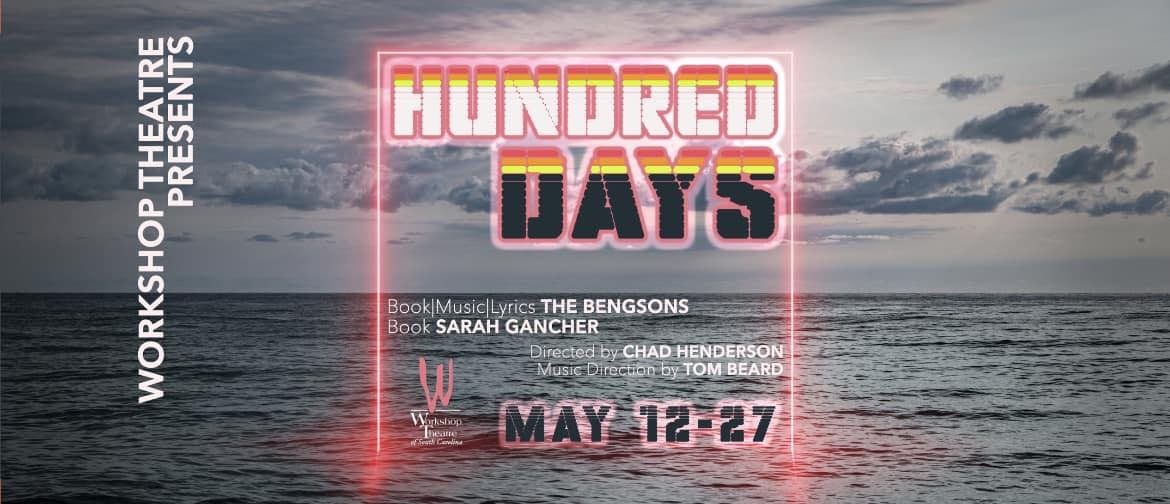by Cindi Boiter
When the world is angry and disappointing, our nerves are frayed and our hearts are bruised, we turn to the arts to soothe and remind us of the things that matter most. High among those things we hold dear is the ability to lose oneself in joy. Luckily for Columbia theatre audiences, we have the opportunity to come together to laugh, pat our feet to the rhythm of the band, and experience the shared heart-flight of song when a vocalist takes us with them up and down the scales of music and emotion. We can do this by attending one of the performances of Ain’t Misbehavin’: The Fats Waller Musical Show which takes the stage at Trustus Theatre through March 22nd.
Directed by Terrance Henderson, this production of Ain’t Misbehavin’ features musical theatre veterans Katrina Garvin and Samuel McWhite, arguably two of the most talented and entertaining vocalists in the SC Midlands. Audiences have come to expect mighty performances and a heightened level of professionalism from both of these performing artists and, on the opening night of this run, we got what we came for. John Ballard and Ara-Viktoria McKinney-Bookman both brought their A-games to opening night with vocals that ranged from soothing to soaring.
But the stand-out for this reviewer, and several other folks I spoke with in the audience, was Mel Driggers in the role originated by Charlaine Woodard. Having seen Driggers in several previous productions, Dandelion, Sweeny Todd, The Rocky Horror Show, and more, we knew that they brought their own uniquely cultivated style to a project, but opening night was the first time this reviewer has witnessed the level of comic acumen Driggers is capable of. As the Gilligan/Scooby Doo of the quintet, Driggers exhibited the kind of comfort with a comedic role that a lot of actors at the local level can’t quite pull off. That’s why, having clowned her way through an early song in the performance with missed notes and big-fun silliness, Driggers drew big-fun applause when they effortlessly hit the right notes, and hit them well, later in the performance.
Rather than being your typical musical theatre performance that adheres to a narrative punctuated by song, Ain’t Misbehavin’ is a musical revue written by Murray Horwitz and Richard Maltby, Jr, with arrangements by Luther Henderson. It opened at the Manhattan Theatre Club in 1978 with a stellar cast that included Nell Carter, Irene Cara, Andre DeShields, Armelia McQueen, and Ken Page. Playing these parts in the Trustus production are Garvin, Driggers, McWhite, McKinney-Bookman, and Ballard, respectively. Charlayne Woodard took over Cara’s part (Driggers) when the show moved to Broadway in 1982. While the playbill for the Trustus performance unfortunately does not provide a list of musical numbers and their performers, expect to hear all your Fats Waller favorites including, “I’m Going to Sit Right Down and Write Myself a Letter,” “Your Feet’ Too Big,” and “The Joint is Jumping,” among others. But don’t take your eyes off the actors who seem to be chilling at the set’s bar or comfy couch pit on the sides of the stage. Many times that is where the funny lives and, while one song is being sung, the cast is setting up the next song on the docket with clever direction and pantomime.
For this production director Henderson opted to make the six-member band a part of the show with the musicians positioned center back of the stage. Music director and pianist is Ayush Joshi, James Wolfe plays trombone, Nigel Ouzts is on trumpet, Ben Eidson on Woodwinds, Kris Phelps on drums, and Andres McNeil plays upright bass. Their presence on the stage exponentially adds to the performance and the little bit of interaction between band members and vocalists that we saw on opening night makes me hope that, with successive performances, the musicians will relax and become even more involved with the cast–because it really works when they are! Choral expert and recent Frank-N-Furter star in the Rocky Horror Show, also at Trustus, Walter Graham served as off-stage music director.
Other behind-the-scenes teammates include Trinessa Dubas as stage manager, scenic designer Corey Langley, whose life-sized characters from previous shows placed in the background of the set provided for some interesting detail, Garreth Hayward on lights with Matt Pound and Walter Kervin on sound, G. Scott Wild on props, and the multi-talented Mel Driggers on costumes. From the audience’s perspective, all these parts of the puzzle came together without a hitch.
There is little to critique about this show. One small detail that I’m sure will improve throughout the run is that, when McKinney-Bookman laughs or smiles, her face lights up and she pulls the audience helplessly into her part of the performance. It would be great to see even more consistent engagement with the audience and fellow cast members from this truly excellent vocalist.
There were too many stand-out songs to name them all, but I’ll mention that Ballard’s rendition of “The Viper’s Drag,” with Ballard fully engaging with the double entendre of the song, was a favorite of this reviewer and many other audience members—especially on a cold Friday night in 2025 when lighting “that tea” and letting “it be” sounds like a pretty good idea.
Certainly, the most moving song of the night had all cast members seated center stage to sing the Waller classic, “Black and Blue,” reminding us for a moment that the world is wrong in so many ways, but sometimes, for a few moments at least, the best thing to do is to sing about it. This performance of the well-known song gave this reviewer chills it was so expertly performed.
How will it end? ain't got a friend
My only sin is my skin
What did I do to be so black and blue?
Jasper recommends that you turn off the news, silence your phones, and grab someone you love to take them out for a night of fun and a fine performance from the cast and crew of Ain’t Misbehavin.’ We need this kind of joy now. It reminds us of what we’re here for, what we have to preserve, and that if artists like Fats Waller could see the sun shine through the cloudy culture that he had to deal with to have his music heard, we should celebrate the example he set by laughing, patting our toes to the rhythm of the band, and rejoicing in the songs he left us.




